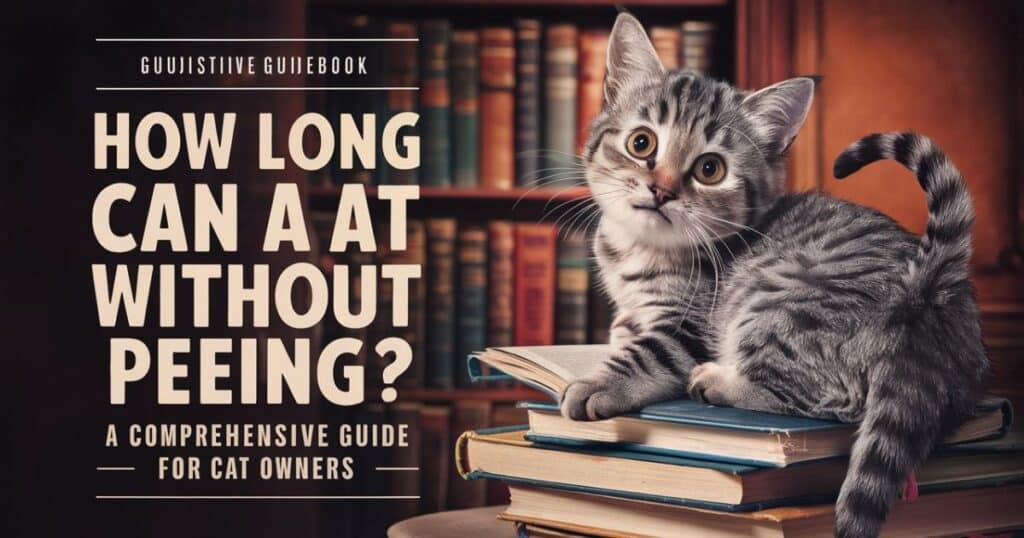As devoted feline friends, we want to ensure our kitties’ well-being, and understanding their urinary habits is crucial. Knowing how long a cat can go without urinating and recognizing potential urinary issues can help us provide proper care and prevent severe health problems.
In this comprehensive guide, we’ll explore the intricacies of a cat’s urinary system, the consequences of prolonged pee retention, and the steps to take when facing urinary concerns.
Understanding Cat Urination
How Do Cats’ Urinary Systems Work?
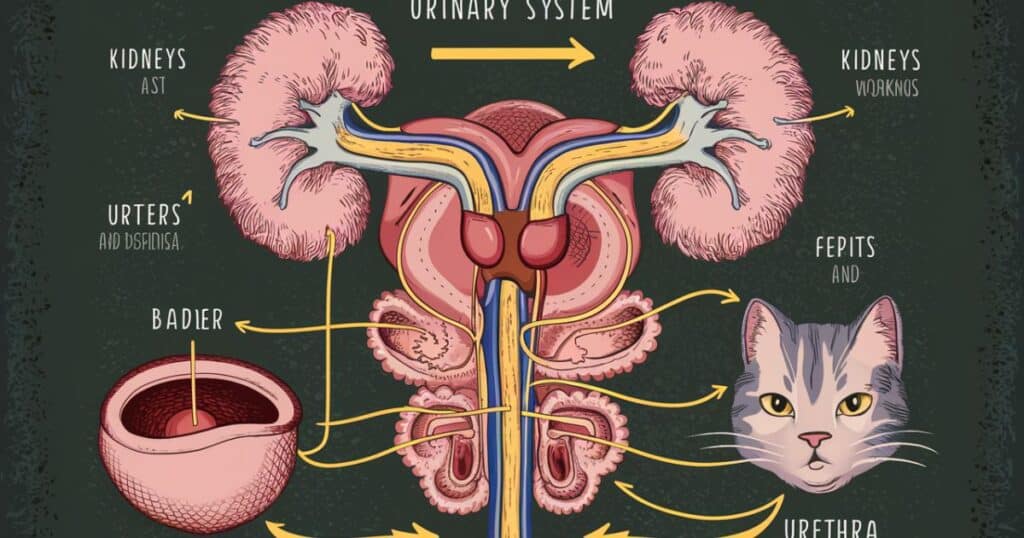
To fully grasp the importance of regular urination, we must first understand how a cat’s urinary system functions. This intricate system consists of the kidneys, ureters, bladder, and urethra. The kidneys filter waste products from the bloodstream, producing urine, which travels through the ureters to the bladder for temporary storage. When the bladder becomes full, the cat experiences the urge to urinate, expelling the urine through the urethra.
The process of urination is controlled by a complex interplay of hormones, nerves, and muscles. The bladder muscle, known as the detrusor, contracts to expel urine, while the sphincter muscles at the bladder neck and urethra relax to allow the flow of urine. This coordinated effort ensures that your feline friend can empty their bladder efficiently and comfortably.
It’s worth noting that a cat’s urinary system is designed to concentrate their urine, allowing them to conserve water more effectively than many other animals. This adaptation is particularly useful for felines, as they may not always have access to fresh water sources in their natural habitats.
MORE POST: Why Is My Cat Gulping While Purring?
Average Time Cats Can Hold Urine Based on Their Age
The ability to hold urine varies among cats based on their age and individual circumstances. Generally, kittens have smaller bladders and may need to urinate more frequently, every 2-4 hours. Adult cats can typically hold their urine for 8-10 hours, while senior felines may require more frequent bathroom breaks due to age-related changes in their urinary system.
However, it’s important to remember that these are just general guidelines, and individual cats may have different needs. Some cats, especially those with certain medical conditions or in specific situations, may need to urinate more or less frequently than the average.
How Much Do Cats Pee in a 24-Hour Period?
A healthy adult cat typically urinates between 2-4 times per day, producing approximately 3-6 ounces (90-180 ml) of urine in a 24-hour period. However, factors such as diet, water intake, and overall health can influence the amount and frequency of urination.
For example, a cat on a high-protein diet may produce more concentrated urine, resulting in less frequent but larger volumes of urine. Conversely, a cat that drinks more water or has certain medical conditions may produce diluted urine and need to urinate more often.
It’s essential to monitor your cat’s urination patterns and be aware of any significant changes, as deviations from their normal routine could indicate an underlying issue that requires veterinary attention.
Causes and Symptoms of Urinary Issues
While occasional accidents or minor changes in urination patterns may be normal, persistent or significant changes could indicate underlying urinary issues that require attention.
What Are the Signs and Causes of Urinary Issues in Cats?
Several factors can contribute to urinary problems in cats, including infections, stones, obstructions, kidney disease, stress, and congenital abnormalities. It’s essential to be aware of the potential signs and causes to ensure prompt treatment and prevent further complications.
Some common signs of urinary issues in cats include:
- Straining or vocalizing during urination
- Frequent trips to the litter box
- Producing little or no urine
- Blood in the urine
- Licking or overgrooming the genital area
- Avoidance of the litter box
- Changes in water consumption or appetite
If you notice any of these signs, it’s advisable to consult your veterinarian for a proper diagnosis and treatment plan.
Symptoms of Urinary Tract Issues in Cats
If your feline friend exhibits any of the following symptoms, it may be an indication of a urinary tract issue:
Straining to Urinate
Your cat may adopt an unusual posture or vocalize while attempting to urinate, suggesting difficulty or discomfort during the process.
Reduced Urine Amounts
A noticeable decrease in the amount of urine produced could signify a blockage or other urinary problem.
Not Urinating at All
If your cat hasn’t urinated for an extended period, it’s a serious concern that requires immediate veterinary attention.
Pain During Urination
Cats may cry out, bite, or become defensive when trying to urinate, indicating pain or discomfort.
Blood in Urine
The presence of blood in the urine, also known as hematuria, can be a sign of a urinary tract infection, stones, or other underlying issues.
Frequent Attempts to Urinate
If your cat is frequently visiting the litter box but producing little or no urine, it could be a sign of a urinary problem.
Avoidance of Litter Box
Cats may avoid using the litter box altogether if they associate it with pain or discomfort during urination.
It’s important to note that some of these symptoms can also be indicative of other medical conditions, so it’s crucial to have your cat evaluated by a veterinarian for an accurate diagnosis and appropriate treatment plan.
Possible Causes of Unusual Peeing Behavior
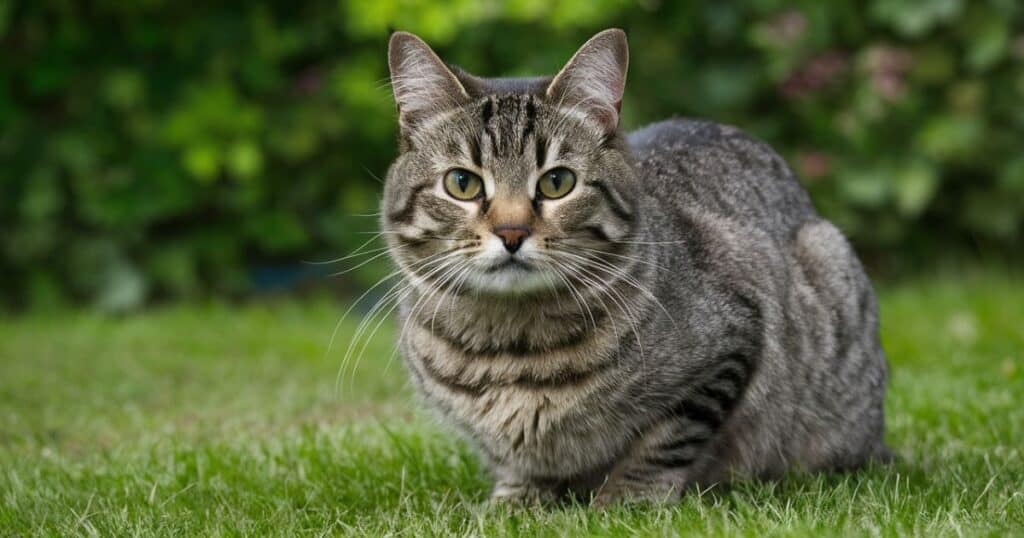
Causes of Urinary Tract Issues in Cats
Several underlying conditions can contribute to urinary problems in cats:
Urinary Tract Infections (UTIs)
Bacterial infections in the bladder or urethra can cause inflammation, pain, and difficulty urinating. UTIs are often caused by bacteria entering the urinary tract through the urethra or spreading from other parts of the body.
Symptoms of a UTI in cats may include:
- Frequent or painful urination
- Blood in the urine
- Licking or overgrooming the genital area
- Lethargy or decreased appetite
Prompt treatment with antibiotics and supportive care is essential to resolve the infection and prevent further complications.
Bladder Stones
The formation of mineral deposits or crystals in the bladder can obstruct urine flow and lead to discomfort during urination. Bladder stones can develop due to various factors, including diet, dehydration, and certain medical conditions.
Symptoms of bladder stones in cats may include:
- Straining or vocalizing during urination
- Blood in the urine
- Frequent or unsuccessful attempts to urinate
- Licking or overgrooming the genital area
Treatment options may involve dietary modifications, medications to dissolve the stones, or surgical removal in severe cases.
Urethral Obstructions
Blockages in the urethra, the tube that carries urine out of the body, can prevent urination and be life-threatening if left untreated. Urethral obstructions can be caused by stones, mucus plugs, or other debris.
Symptoms of a urethral obstruction in cats may include:
- Straining or vocalizing during attempted urination
- Frequent trips to the litter box with little or no urine production
- Lethargy or loss of appetite
- Vomiting or abdominal pain
Urethral obstructions are medical emergencies that require immediate veterinary attention, as they can quickly lead to toxic buildup and potentially fatal consequences.
Kidney Disease
Chronic kidney disease can affect the kidneys’ ability to filter waste products, leading to changes in urination patterns and urine composition.
Symptoms of kidney disease in cats may include:
- Increased thirst and urination
- Weight loss or poor appetite
- Lethargy or weakness
- Vomiting or diarrhea
Regular veterinary check-ups and monitoring of blood and urine tests can help detect kidney disease early and allow for appropriate management.
Emotional or Environmental Stressors
Stress, anxiety, or changes in a cat’s environment can sometimes lead to litter box aversion or inappropriate urination.
Potential stressors for cats may include:
- New family members (human or animal)
- Renovations or construction in the home
- Relocation or changes in routine
- Conflicts with other pets in the household
- Medical issues or discomfort
Addressing the underlying cause of stress and creating a calm, predictable environment can often help resolve stress-related urinary issues in cats.
Congenital Abnormalities
Some cats may be born with structural abnormalities in their urinary system, predisposing them to urinary issues throughout their lives.
Examples of congenital abnormalities that can affect a cat’s urinary health include:
- Ectopic ureters: Ureters that connect to the wrong location, causing urine to leak outside the bladder.
- Urethral obstructions: Narrowing or blockages in the urethra, making it difficult to urinate.
- Bladder or kidney malformations: Abnormal development of the bladder or kidneys, which can impair their function.
While congenital abnormalities cannot be prevented, early detection and appropriate management can help minimize the impact on your feline friend’s quality of life.
It’s important to note that many of these underlying causes can overlap or coexist, making it essential to work closely with your veterinarian to identify and address the root cause of your cat’s urinary issues.
Behavioral Indicators of Urinary Problems
In addition to physical symptoms, cats may exhibit specific behaviors that can signal urinary problems. Being attuned to these behavioral changes can help you identify potential issues early and seek prompt veterinary care.
Why Is Your Cat Not Peeing or Pooping?
If your cat is not urinating or defecating, it could be a sign of an underlying issue. Here are some potential reasons:
Stress and Anxiety
Cats are highly sensitive to changes in their environment, and stress or anxiety can sometimes lead to litter box aversion or urinary issues. Stressed cats may associate the litter box with a negative experience or may feel threatened or uncomfortable in the area where the litter box is located.
Injury
Physical injuries, especially those affecting the abdomen or lower back, can make it difficult or painful for a cat to urinate or defecate. Trauma, accidents, or underlying musculoskeletal conditions can contribute to these issues.
Illness
Various illnesses, such as kidney disease, diabetes, or neurological disorders, can affect a cat’s ability to urinate or defecate normally. Underlying medical conditions can disrupt the normal function of the urinary and digestive systems.
Dehydration and Constipation
Lack of adequate water intake or fiber in the diet can lead to dehydration and constipation, potentially causing urinary or defecation issues. Proper hydration and a balanced diet are essential for maintaining healthy elimination.
Dietary Problems
Sudden diet changes or food intolerances can sometimes disrupt a cat’s urination or defecation patterns. Introducing new foods or switching diets too quickly can cause digestive upset and affect elimination habits.
If you notice your cat is not urinating or defecating regularly, it’s crucial to monitor their behavior and consult your veterinarian, especially if the issue persists or other symptoms are present.
Diagnosis and Treatment
What Happens to Cats If They Stop Peeing?
If a cat is unable to urinate for an extended period, it can lead to severe and potentially life-threatening consequences. The buildup of waste products in the bloodstream can cause toxicity, while the accumulation of urine in the bladder can result in bladder distension, rupture, and subsequent kidney damage.
When a cat cannot urinate, the following complications may occur:
- Uremia: Accumulation of waste products, such as urea and creatinine, in the bloodstream, leading to toxicity and potentially life-threatening conditions.
- Bladder rupture: If the bladder becomes excessively distended due to the inability to urinate, it can rupture, causing urine to leak into the abdomen and potentially leading to peritonitis (inflammation of the abdominal lining).
- Kidney damage: Prolonged urine retention can cause increased pressure on the kidneys, potentially leading to kidney damage or failure.
- Electrolyte imbalances: Disruptions in the balance of vital electrolytes, such as potassium and sodium, can occur due to the inability to excrete waste products through urination.
It’s important to note that the severity and onset of these complications can vary depending on the underlying cause and the individual cat’s overall health. However, any prolonged inability to urinate should be considered a medical emergency and addressed promptly to prevent potentially fatal consequences.
Diagnosis and Treatment of Urinary Tract Issues in Cats
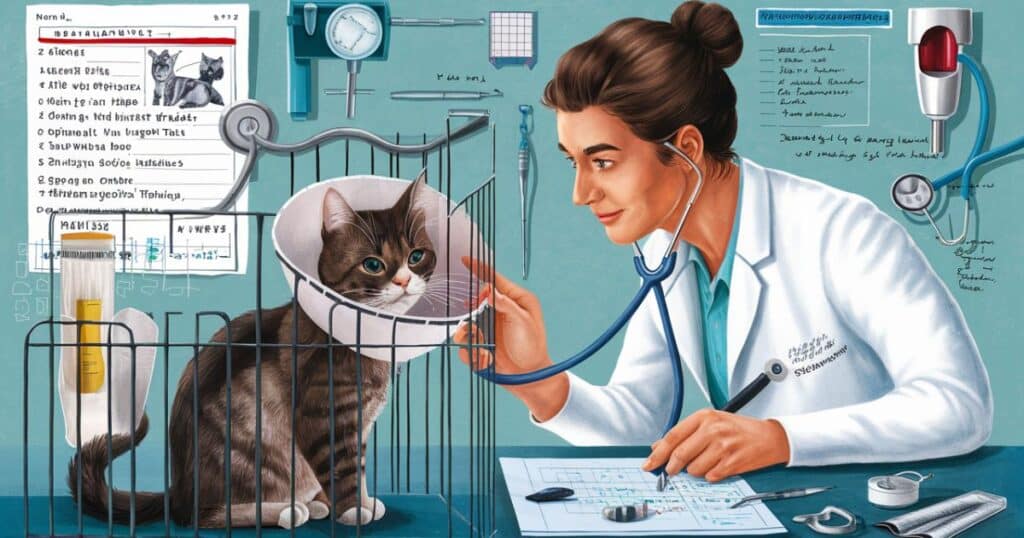
If you suspect your cat is experiencing urinary issues, it’s crucial to seek veterinary assistance. Your veterinarian will perform a thorough physical examination and may recommend diagnostic tests such as urinalysis, blood work, or imaging to identify the underlying cause.
The diagnostic process may involve:
- Physical examination: Your veterinarian will palpate the abdomen, assess hydration status, and check for any signs of discomfort or pain.
- Urinalysis: Analyzing a urine sample can provide valuable information about the presence of infection, crystals, or other abnormalities.
- Blood tests: Blood work can evaluate kidney function, electrolyte levels, and other markers that may indicate underlying conditions.
- Imaging studies: Techniques such as ultrasound or radiographs (X-rays) can help visualize the urinary tract and identify obstructions, stones, or anatomical abnormalities.
Treatment will depend on the specific condition but may include:
- Antibiotics: For bacterial urinary tract infections, your veterinarian may prescribe antibiotics to combat the infection.
- Dietary modifications: Changes in diet or the introduction of prescription diets can help manage certain conditions, such as bladder stones or crystal formation.
- Medication: Depending on the underlying cause, your veterinarian may prescribe medications to help dissolve stones, relieve pain or inflammation, or address other specific issues.
- Fluid therapy: In cases of severe dehydration or electrolyte imbalances, intravenous fluid administration may be necessary.
- Surgery: For severe obstructions, large stones, or structural abnormalities, surgical intervention may be required to remove the blockage or correct the underlying issue.
In some cases, supportive care, such as pain management, catheterization, or hospitalization, may be recommended to ensure your cat’s comfort and recovery.
It’s essential to follow your veterinarian’s instructions carefully and complete the prescribed course of treatment to ensure the best possible outcome for your feline friend.
Prevention
While some urinary issues may be unavoidable, there are several steps you can take to promote optimal bladder health and reduce the risk of problems:
Preventive Measures to Ensure a Cat’s Urinary Health
Regular Veterinary Check-Ups
Annual or bi-annual wellness exams with your veterinarian can help detect potential urinary issues early and monitor your cat’s overall health. Regular check-ups allow your veterinarian to assess your cat’s hydration status, perform physical examinations, and recommend necessary diagnostic tests or preventive measures.
Providing Multiple Litter Boxes
In multi-cat households, offering one litter box per cat, plus an additional one, can help prevent litter box aversion and encourage regular urination. This reduces the risk of territorial disputes or stress-related issues that may lead to inappropriate elimination.
It’s also essential to keep the litter boxes clean and in quiet, easily accessible locations. Cats are naturally clean animals and may avoid using a soiled litter box, leading to potential urinary problems.
Ensuring Access to Clean Water
Providing fresh, clean water and encouraging adequate hydration can help flush out the urinary system and prevent the formation of crystals or stones. Dehydration can contribute to the development of urinary issues, so ensuring your cat has access to clean water at all times is crucial.
You can encourage water intake by using multiple water bowls, trying different types of water bowls (e.g., fountains or bowls with low sides), or adding a small amount of low-sodium broth or tuna water to their drinking water.
Monitoring Cat’s Diet and Physical Activity
A balanced diet and regular exercise can contribute to maintaining a healthy urinary system and preventing obesity, which can exacerbate urinary issues.
Consult with your veterinarian about appropriate dietary recommendations for your cat’s life stage, activity level, and any specific health concerns. Some diets may be formulated to help prevent or dissolve certain types of stones or crystals in the urinary tract.
Additionally, encouraging regular physical activity can help maintain a healthy weight and promote overall well-being, which can positively impact urinary health.
Addressing Environmental Factors
Reducing stress and providing a comfortable, predictable environment for your cat can also play a role in preventing urinary issues. Cats are creatures of habit and can be sensitive to changes in their surroundings or routines.
Here are some tips to create a stress-free environment for your feline friend:
- Provide hiding spots, scratching posts, and vertical spaces to encourage natural behaviors.
- Minimize loud noises, strong smells, or sudden changes in the household.
- Slowly introduce new pets or family members to avoid territorial disputes or stress.
- Ensure the litter boxes are in quiet, low-traffic areas and cleaned regularly.
- Provide mental stimulation through play sessions, puzzle feeders, or interactive toys.
By addressing potential stressors and creating a calm, enriched environment, you can help reduce the risk of stress-related urinary issues in your cat.
Addressing Specific Concerns
How Can I Help My Cat Pee?
If your cat is having difficulty urinating, there are a few steps you can take to assist them:
The Ragdoll Technique
Gently wrapping your cat in a towel or blanket, leaving the hind end exposed, and applying gentle pressure on the abdomen can sometimes help stimulate urination. This technique should only be used under the guidance of a veterinarian and with caution, as improper application can cause discomfort or injury.
Clean The Litter Box
A fresh, clean litter box can encourage your cat to use the litter box more readily. Cats have a natural aversion to soiled litter boxes and may avoid them, leading to potential urinary issues.
Make Sure Drinking Water is Always Within Reach
Ensuring your cat has access to fresh, clean water at all times can promote regular hydration and urination. Dehydration can contribute to the formation of crystals or stones in the urinary tract, so encouraging adequate water intake is essential.
Provide Litter Box Options
If your cat is avoiding the litter box, try offering different types of litter boxes or litter substrates. Some cats may prefer covered or uncovered boxes, while others may have a preference for specific litter materials.
Address Environmental Stressors
Identify and address any potential environmental stressors that may be contributing to your cat’s reluctance to urinate. This could include changes in the household, conflicts with other pets, or stressful situations.
If your cat continues to experience difficulty urinating despite these measures, it’s crucial to seek veterinary care promptly, as prolonged inability to urinate can lead to serious health complications.
What Should You Do When Your Cat Can’t Poop or Pee?
If your cat is unable to urinate or defecate, it’s essential to seek veterinary care immediately, as this could be a sign of a severe blockage or other underlying issue. Prolonged inability to urinate or defecate can quickly become life-threatening for your feline friend.
Here are the steps you should take:
- Monitor your cat closely: Observe your cat’s behavior and note any signs of discomfort, vocalizations, or attempts to urinate or defecate.
- Seek immediate veterinary attention: Contact your veterinarian or an emergency veterinary clinic as soon as possible. Explain the situation and follow their instructions promptly.
- Avoid home remedies: Do not attempt to manually express your cat’s bladder or administer any medications without veterinary guidance, as this can cause harm or further complications.
- Prepare for potential hospitalization: In severe cases, your cat may require hospitalization for diagnostic tests, fluid therapy, catheterization, or surgical intervention.
It’s important to act quickly when a cat is unable to urinate or defecate, as the buildup of waste products in the body can rapidly become toxic and life-threatening.
My Cat Is Eating and Drinking But Not Peeing
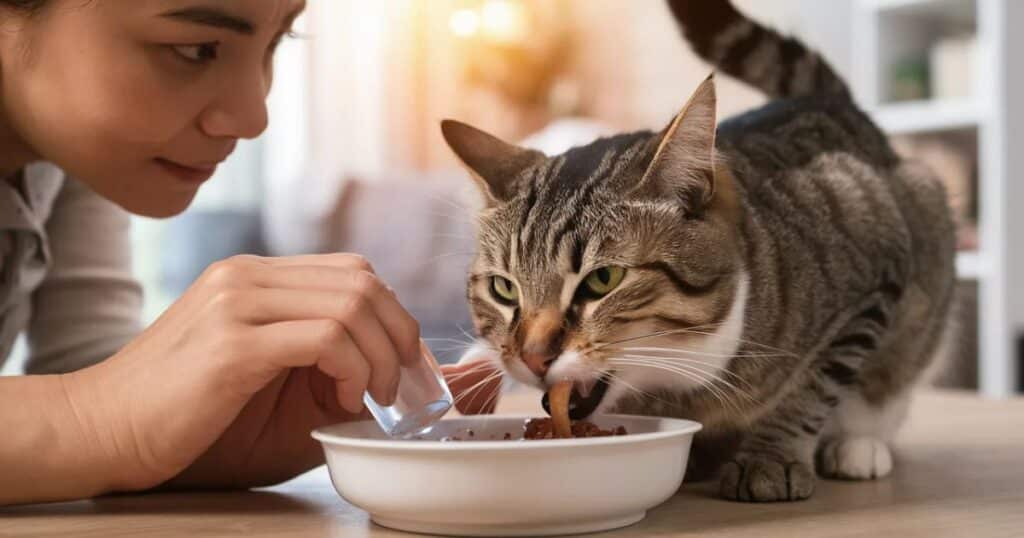
If your cat is eating and drinking normally but not urinating, it could indicate a partial or complete blockage in the urinary tract. This situation requires prompt veterinary attention, as it can lead to bladder distension, toxin buildup, and potentially fatal consequences if left untreated.
Some potential causes of this issue include:
- Urethral obstruction: A blockage in the urethra, the tube that carries urine from the bladder out of the body, can prevent urination. This can be caused by stones, mucus plugs, or other debris.
- Bladder stones or crystals: The formation of mineral deposits or crystals in the bladder can obstruct urine flow, leading to difficulty urinating.
- Neurological or anatomical abnormalities: Conditions that affect the nerves or structure of the urinary tract can disrupt the normal process of urination.
If your cat is eating and drinking but not urinating, it’s essential to seek veterinary care immediately, as this can quickly become a medical emergency. Do not attempt to manually express your cat’s bladder or administer any medications without veterinary guidance, as this can cause harm or further complications.
Why Is My Cat Not Peeing But Acting Normal?
Sometimes, cats may exhibit normal behavior but still have urinary issues. This could be due to a variety of reasons, such as early-stage infections, stress, or subtle blockages. If your cat is not urinating regularly, it’s best to consult your veterinarian, even if they seem otherwise healthy.
Here are some potential explanations for why a cat may not be peeing but acting normal:
- Early-stage urinary tract infection (UTI): In the initial stages of a UTI, your cat may not display obvious signs of discomfort or illness, but changes in urination patterns could be an early indicator.
- Stress or environmental factors: Stress, anxiety, or changes in the environment can sometimes lead to litter box aversion or infrequent urination, even if your cat appears to be acting normally otherwise.
- Partial blockages or small stones: Your cat may have a partial blockage or small stones in the urinary tract that are not causing severe discomfort yet but are interfering with normal urination.
- Dehydration: Mild dehydration can sometimes lead to decreased urination without causing other significant changes in behavior or appearance.
- Aging or underlying medical conditions: As cats age or develop certain medical conditions (e.g., kidney disease, diabetes), changes in urination patterns may occur before other symptoms become apparent.
It’s important to remember that even seemingly minor changes in urination habits can be indicative of an underlying issue that requires veterinary attention. Consulting your veterinarian can help identify the cause and provide appropriate treatment or preventive measures.
How Do You Know If Your Cat Has to Go to The Bathroom?
Cats are generally good at communicating their need to urinate or defecate, but it’s essential to be attuned to their signals. Here are some common signs that your cat may need access to a litter box:
- Sniffing or circling around the litter box: If your cat is sniffing or circling around the litter box area, it could be a sign that they need to eliminate.
- Meowing or vocalizing: Some cats may meow or vocalize to get your attention and signal their need to use the litter box.
- Squatting or assuming the elimination posture: If your cat assumes a squatting position or takes on the posture they typically use when eliminating, it’s a clear sign that they need to go.
- Restlessness or pacing: If your cat seems restless, pacing, or unable to settle down, they may be trying to communicate their need to use the litter box.
- Scratching or digging: Some cats may scratch or dig at the floor or other surfaces, which can be a signal that they need to eliminate.
It’s important to provide your cat with easy access to a clean litter box and to respond promptly to these cues. Ignoring or delaying their need to eliminate can lead to litter box avoidance, stress, and potentially urinary issues.
If you notice any changes in your cat’s Elimination habits or signals, such as increased frequency, straining, or avoidance of the litter box, it’s essential to consult your veterinarian to rule out any underlying medical issues.
Is It Safe to Allow a Cat to Go Without Peeing for an Extended Period?
No, it’s not safe to allow a cat to go without urinating for an extended period. Cats should typically urinate at least once every 24-48 hours. If your cat hasn’t urinated in over 48 hours, it’s considered an emergency situation, and you should seek veterinary care immediately.
Prolonged inability to urinate can lead to severe and potentially life-threatening consequences for your feline friend. When a cat cannot urinate, the following complications may occur:
- Uremia: Accumulation of waste products, such as urea and creatinine, in the bloodstream, leading to toxicity and potentially life-threatening conditions.
- Bladder rupture: If the bladder becomes excessively distended due to the inability to urinate, it can rupture, causing urine to leak into the abdomen and potentially leading to peritonitis (inflammation of the abdominal lining).
- Kidney damage: Prolonged urine retention can cause increased pressure on the kidneys, potentially leading to kidney damage or failure.
- Electrolyte imbalances: Disruptions in the balance of vital electrolytes, such as potassium and sodium, can occur due to the inability to excrete waste products through urination.
It’s important to note that the severity and onset of these complications can vary depending on the underlying cause and the individual cat’s overall health. However, any prolonged inability to urinate should be considered a medical emergency and addressed promptly to prevent potentially fatal consequences.
If you suspect your cat is having difficulty urinating, monitor them closely and seek veterinary assistance immediately. Do not attempt to manually express their bladder or administer any medications without veterinary guidance, as this can cause harm or further complications.
When to Be Concerned About Changes in a Cat’s Urination Frequency
While some variation in urination frequency is normal, sudden or significant changes should be monitored closely. If your cat is urinating much more or less frequently than usual, exhibiting signs of discomfort or straining, or producing abnormal urine (e.g., bloody, cloudy, or strong-smelling), it’s advisable to consult your veterinarian.
Here are some situations when you should be concerned about changes in your cat’s urination patterns:
- Increased frequency: If your cat is urinating more frequently than usual, it could be a sign of a urinary tract infection, kidney disease, diabetes, or other underlying medical conditions.
- Decreased frequency or inability to urinate: If your cat is not urinating as often as usual or has not urinated in over 24 hours, it could indicate a blockage, urinary tract obstruction, or other serious issues that require immediate veterinary attention.
- Straining or discomfort: If your cat appears to be straining or experiencing discomfort while urinating, it could be a sign of a urinary tract infection, bladder stones, or other problems that need to be addressed.
- Blood in the urine: The presence of blood in your cat’s urine (hematuria) can indicate a urinary tract infection, bladder stones, or other underlying conditions that require prompt medical attention.
- Changes in urine color or odor: Abnormal urine color or a strong, unusual odor can be an indication of various health issues, such as infections, liver or kidney problems, or metabolic disorders.
- Litter box avoidance: If your cat is avoiding the litter box or urinating in inappropriate places, it could be a sign of a medical issue or stress-related behavior that needs to be addressed.
- Other accompanying symptoms: If changes in urination patterns are accompanied by other symptoms such as lethargy, loss of appetite, vomiting, or diarrhea, it could indicate a more serious underlying condition that requires immediate veterinary attention.
It’s essential to monitor your cat’s urination habits and consult your veterinarian if you notice any concerning changes or persistent issues. Early detection and prompt treatment can prevent further complications and help maintain your feline friend’s overall health and well-being.
Conclusion
Maintaining a healthy urinary system is crucial for your feline friend’s overall well-being. By understanding the normal urination patterns and being aware of the potential signs and causes of urinary issues, you can take proactive steps to ensure your cat’s comfort and prevent severe complications.
Regular veterinary check-ups, providing a stress-free environment, ensuring access to clean water, and monitoring your cat’s litter box habits can go a long way in promoting optimal bladder health. If you notice any concerning changes in your cat’s urination or behavior, don’t hesitate to seek veterinary advice. With proper care and attention, you can help your unique feline maintain a healthy urinary system and enjoy a happy, comfortable life.
Remember, addressing urinary concerns promptly is essential, as prolonged issues can lead to severe consequences for your beloved feline friend. By staying vigilant and following your veterinarian’s recommendations, you can help ensure your cat’s overall health and well-being.
Don’t let urinary problems go unnoticed – your feline companion’s well-being depends on it. Stay informed, stay proactive, and provide the care your furry friend deserves for a lifetime of companionship and purr-fect health.
ALSO READ THIS POST: What Vaccines Do Cats Need To Be Boarded?
FAQ’s
When should I worry if my cat hasn’t peed?
You should worry if your cat hasn’t urinated in over 24-48 hours. Prolonged inability to urinate can be a medical emergency and can lead to serious complications if left untreated.
How long can a cat survive without urinating?
Cats generally cannot survive more than 3-4 days without urinating. Failure to urinate can quickly lead to toxin buildup, bladder rupture, and kidney damage, which can be fatal if not addressed promptly.
Why is my cat not peeing but acting normal?
If your cat is not urinating but acting normal, it could be due to early-stage urinary tract infections, stress, subtle blockages, or other underlying issues. Even if they seem fine, it’s advisable to consult your veterinarian if your cat is not urinating regularly.
How long will cats hold their pee?
Most healthy adult cats can hold their urine for 8-10 hours, while kittens and senior cats may need more frequent bathroom breaks. However, it’s not recommended for cats to hold their urine for more than 24 hours, as it can lead to health issues.

Davin Connor is an experienced author with 3 years in pets writing. Known for concise, informative content, he shares expertise on pet care, behavior, and health through his engaging articles.
